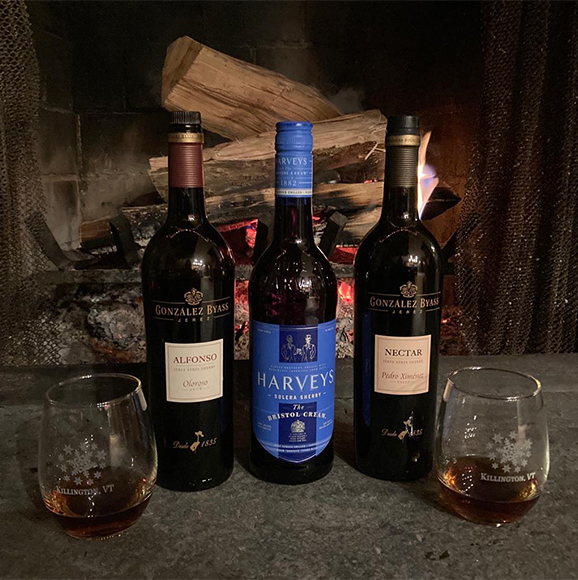I am often asked the question, “So what’s your favorite wine?” which always begins a discussion on time and place, temperature and season, situation and present company. What could be the perfect wine for one setting could well be dead wrong for another. No one wants a light and fruity Sauvignon Blanc when it’s cold and snowing outside. And no one would open a big and hearty Malbec or Cabernet Sauvignon in a heat wave. So, what a pleasant surprise to find these three bottles of sherry on my doorstep just as the temperatures were dropping off to winter.
Sherries, like other fortified wines of the world, have an ancient history for good reason. Fortified wines are grape-based fermented juice that at some point has a distilled spirit added to it, either to kill the yeasts, maintaining the natural sugars in the juice, or just to increase the final alcohol levels. Back in the day, wines and beers were consumed not just for fun or sacramental reasons. Both were safe and trustworthy products for hydration. With poor hygiene and ineffective or nonexistent septic systems, open bodies of water could and did make people sick. But these fermented liquids did not contain the bacterial and microbial pathogens that sickened people, so they became the drink of choice.
And wines back then were generally not aged and cellared. Without good storage, wines were made for daily consumption as poor storage vessels and heat and cold would start to kill the fresh wine flavors quite quickly. So fortified wines became a passion, largely because they were almost impervious to the weather vagaries, shipping abuses and time. Sherries, ports, madeiras, marsalas and vermouths are all fortified wines and they have impressive shelf lives. All of these became popular, especially when transporting them to market by ship or wagon could take weeks or months.
The Jerez region in southwest Spain on the Atlantic Ocean is the source of all sherries and is one of the oldest protected Denomination of Origins in the country, established in the 1930s to safeguard the name and the product. Sherries can be bone dry or powerfully sweet or anything in between. Most sherries are made from the Palomino grape. The sweeter sherries tend to be made with Pedro Ximénez or Moscatel grapes, which are often sun- or air-dried first to concentrate the sugars.
We patiently waited for the perfect night to open these three bottles. I really wanted a fire for ambience and snow flying for contrast and beauty. I first tasted the González Byass Oloroso made from the Palomino grape. Oloroso is midline in the dry/sweet spectrum with an alcohol level of 18% and is intentionally oxidized for flavor. Showing a clean copper hue with a delightful smokiness, it is spicy and nutty, clean and dry on the palate with a warming mouthfeel. With aromas of dry saddle leather and a pleasant saltiness in the mouth, this is a wine to be savored.
Our next taste was the Harveys Bristol Cream, which is a blend of a few styles of sherry that is then sweetened. Tasting pleasantly sweet and lush with full caramel and molasses flavors, it is multidimensional with a great lingering mouthfeel.
Finally we tasted the González Byass Pedro Ximénez (PX) Nectar. This sherry is romantic by itself. Dark coffee-colored with notes of burnt orange, molasses, dried figs and raisins, it was aromatic with a silky mouthfeel and a lovely and agreeable sweetness. It went on to exhibit dark caramel, chocolate and coffee flavors. Quite simply this PX is a symphony in a glass.
All of these sherries are quite easy to locate and are ridiculously affordable. Each can pair well with food. I’m thinking oysters or a seafood dish for the Oloroso. A fruit and nut tray with bleu cheese would work well with the Harveys Bristol Cream and the PX. Or each can stand alone and will stimulate descriptives and discussion. Find a few bottles and look for the perfect night. These sherries will delight your palate and warm your toes. Yummy indeed.
Write me at doug@dougpaulding.com.


